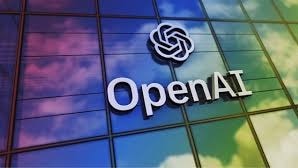After launching the operator last week, Openai will be presenting its next AI agent, “Deep Research.” Agents are designed to perform in-depth research using chatbot chatgpt. Powered by Openai O3 optimized for web browsing and Python analysis, Deep Research uses inference to intelligently and extensively browse text, images and PDFs on the Internet, Openai explains .
The blog post states, “Deep research has been built for people who do intensive knowledge work in areas such as finance, science, policy, and engineering, and requires thorough and reliable research.”
“This also helps identify shoppers looking for ultra-personal recos on purchases that require careful research,” he adds.
Openai VP engineer Srinivas Narayanan explains the new model as “a new way to use AI to support complex knowledge tasks.” He added that deep research is like seeking expert advice. We aim to minimize tasks and save time in research when done by humans.
In-depth Study of Openai: How to Use
In ChatGpt, select “Deep Research” from Message Composer and enter the query. Whether you want a competitive analysis of streaming platforms or personalized reports on the best commuter bikes, let ChatGpt know what you’re looking for. You can also attach files and spreadsheets to add context. When you submit a request, the sidebar appears to show the steps taken and the sources used during the process.
Openai has confirmed that this AI agent can take 5-30 minutes depending on the complexity of the inquiry. Once the investigation is complete, users will receive notifications and are free to perform other tasks until then. The final results will be delivered as a detailed report within the chat.
According to the company, Deep Research is excellent at providing comprehensive and well-documented answers with verified sources, while GPT-4 is suitable for real-time multimodal conversations. For complex, domain-specific queries that require depth and accuracy, deep research offers the advantages of extensive exploration and citations that are optimal for generating reliable and practical insights.
To explain how this agent works, CEO Sam Altman posted an example on X (formerly Twitter). He says that although this model is slow, it is “the first AI model that can perform such a wide variety of complex and valuable tasks.
Openai also plans to quickly enhance the clarity and context of the report by adding embedded images, data visualization and other analytics capabilities.
How is it different from an operator?
A key differentiation is that operators can take care of a wide range of repetitive browser activities, such as completing forms, ordering grocery, creating memes, but not conducting in-depth research like new AI agents.
Deep research is based on the ability to reason to fill gaps, allowing people to take on the types of problems they face in their work and daily life.
However, both agents are a critical step towards the broader goal of developing AGIs, and Openai has long pointed out.
This also happens when Deepseek, a Chinese AI model, attracted a lot of attention with its advanced technology and low cost. Openai CEO Sam Altman also praised Deepseek, but he promised a much better model.



